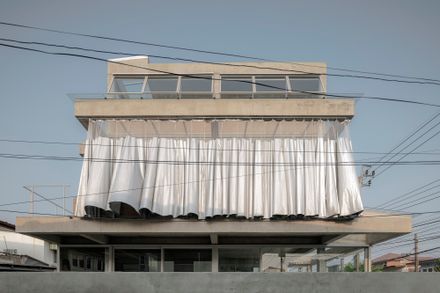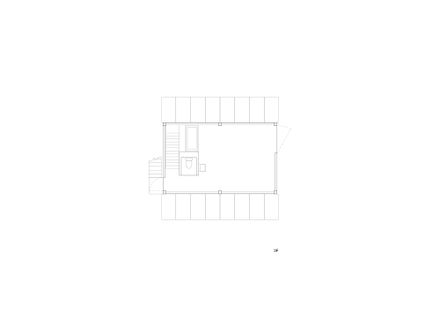ARCHITECTS
Bangkok Tokyo Architecture
STRUCTURAL ENGINEER
Pongrapee Lilatasninukul
LEAD ARCHITECTS
Takahiro Kume, Wtanya Chanvitan, Bhoomchaya Prakongpetch
DESIGN TEAM
Bangkok Tokyo Architecture
CURTAIN DESIGN
Wasita Uancharoenkul
MANUFACTURERS
Apk Brick, Thai Soung
CONTRACTOR
Jarin Dejchutrakul
PHOTOGRAPHS
Soopakorn Srisakul
AREA
180 M²
YEAR
2023
LOCATION
Bangkok, Thailand
CATEGORY
Houses
House K is a residence located in an old residential area, characterized by two-story buildings with gabled roofs set back from the road.
Over time, the neighborhood has undergone changes with houses being painted in various colors, fences being rebuilt, and windows being replaced, resulting in a diverse residential landscape.
The client decided to reconstruct their family home due to changes in their family structure and the deterioration of the existing house.
The new house aims to prioritize participation and engagement rather than trying to achieve an absolute form or momentary desires.
It takes on a form that seemingly has emerged organically from its surroundings, blurring the distinction between its origin and end.
Initially, a simple concrete grid frame was established for three stories, which was then modified and extended outward to shape the overall structure. Bricks were laid between the frames to form walls.
The placement of windows, skylights, stairs, curtains, and bathrooms followed, with each element subtly deviating from the original frame, resulting in a space of fragmented coexistence—autonomous yet interconnected.
Each floor serves a distinct function: the mother's room, a living/dining area, and the son's room.
The projecting beams create shared spaces such as approaches, corridors, and balconies.
These semi-outdoor areas not only provide connectivity between floors but also establish a direct connection between the interior and the external environment, encompassing the city, natural light, and air.
Furthermore, they offer potential for future expansions and adaptations. The construction method employed —laying bricks between a reinforced concrete grid frame—is most common in the surrounding context.
Many neighboring houses and even skyscrapers utilize this structure, often concealed beneath decorative facades.
By exposing and modifying this internal framework, the domestic realm is unveiled, revealing its origins and becoming accessible.
Through a continuous process that involves integrating new possibilities into a form and iteratively modifying and altering it to achieve a balanced state— the process of House K is much like the ongoing act of habitation itself.






















